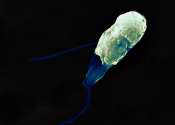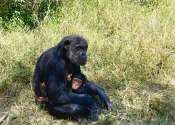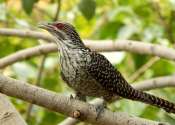An ancestor is a parent or (recursively) the parent of an ancestor (i.e., a grandparent, great-grandparent, great-great-grandparent, and so forth).
Two individuals have a genetic relationship if one is the ancestor of the other, or if they share a common ancestor. In evolutionary theory, species which share an evolutionary ancestor are said to be of common descent. However, this concept of ancestry does not apply to some bacteria and other organisms capable of horizontal gene transfer.
Assuming that all of an individual's ancestors are otherwise unrelated to each other, that individual has 2n ancestors in the nth generation before him and a total of about 2g+1 ancestors in the g generations before him. In practice, however, it is clear that the vast majority of ancestors of humans (and indeed any other species) are multiply related (see Pedigree collapse). Consider n = 40: the human species is surely more than 40 generations old, yet the number 240, approximately 1012 or one trillion, dwarfs the number of humans that have ever lived.
Ignoring the possibility of other inter-relationships (even distant ones) among ancestors, an individual has a total of 2046 ancestors up to the 10th generation, 1024 of which are 10th generation ancestors. With the same assumption, any given person has over a billion 30th generation ancestors (who lived roughly 1000 years ago) and this theoretical number increases past the estimated total population of the world in around AD 1000. (All of these ancestors will have contributed to one's autosomal DNA is concerned: this excludes Y-chromosomal DNA and mitochondrial DNA.)
Some cultures confer reverence to ancestors, both living and dead; in contrast, some more youth-oriented cultural contexts display less veneration of elders. In other cultural contexts, some people seek providence from their deceased ancestors; this practice is sometimes known as ancestor worship or, more accurately, ancestor veneration.









